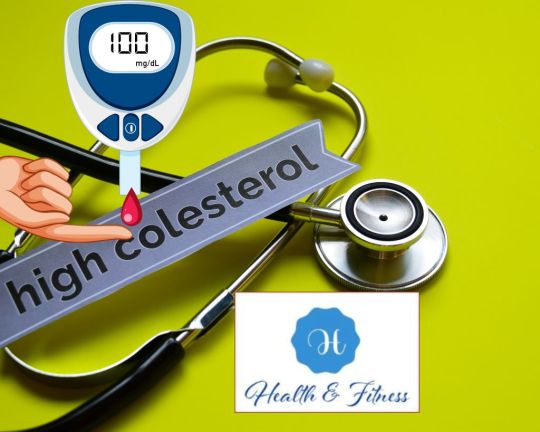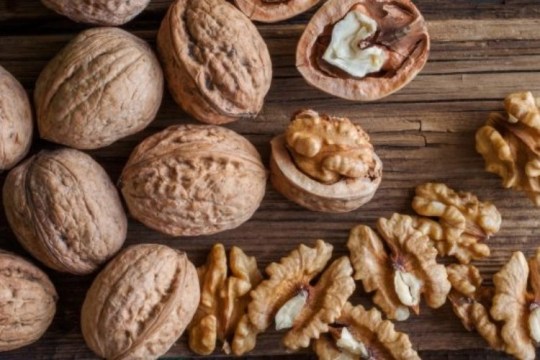#Lowering LDL naturally
Explore tagged Tumblr posts
Text
What Is Dyslipoproteinemia, Why Does It Matter, & What Can We Do About It?
How I Managed Cholesterol Imbalances Naturally — A Quick Reflection on 30+ Years of Research and Experience Like a mindmap with every link, this short story reflects my three decades of research and personal experiences in understanding and managing dyslipoproteinemia without medication. I studied the impact of cholesterol imbalances on cardiovascular health and practiced steps for managing…
#Cardiovascular health#Cholesterol and diet myths#Cholesterol management#Cholesterol without statins#Cholesterol-rich diet paradox#dyslipoproteinemia#HDL cholesterol boost#Healthy cholesterol levels#Heart disease prevention tips#LDL vs HDL#Lipoproteins explained#Lowering LDL naturally#Natural heart health#Non-medication cholesterol control#Preventing heart attacks naturally
0 notes
Text
Lipid Control Plus: Cholesterol Solution

Managing cholesterol can often feel like an uphill battle. But what if there was a simple, natural, and effective way to take control? Enter Lipid Control Plus, a multi-ingredient food supplement crafted for those who want to take proactive and comprehensive care of their cholesterol levels. With its friendly tone and science-backed formulation, this supplement is designed to fit seamlessly into your lifestyle while delivering exceptional benefits.
What is Cholesterol, and Why Should You Care?
Cholesterol plays a dual role in our health. While HDL ("good cholesterol") supports various bodily functions, LDL ("bad cholesterol") can lead to clogged arteries and heart health issues. Balancing these levels is critical for long-term wellness.
Unfortunately, busy lifestyles, poor diets, and genetic predispositions often tip this delicate balance in the wrong direction. That’s where Lipid Control Plus steps in, giving your body the support it needs to maintain healthy cholesterol levels.
Take Charge of Your Cholesterol Today! Try Lipid Control Plus for a Healthier, Happier You.
The Lipid Control Plus Difference
Supports Healthy Cholesterol Levels
Say goodbye to constant worries about LDL spikes! Lipid Control Plus provides targeted support to keep cholesterol in check, letting you focus on enjoying life.
Promotes Cardiovascular Health
Your heart deserves the best care. By improving cholesterol metabolism, Lipid Control Plus helps your cardiovascular system function optimally.
Boosts Overall Energy and Vitality
Better cholesterol levels often translate into more energy and vitality. With Lipid Control Plus, you’re not just managing health—you’re enhancing it.
The Power of a Multi-Ingredient Formula
Lipid Control Plus is no ordinary supplement. Its innovative formula combines:
Plant Sterols: Clinically proven to lower LDL levels.
Artichoke Leaf Extract: Supports liver function and bile production.
Fenugreek Seed Extract: Improves lipid metabolism naturally.
Vitamin C: Boosts antioxidant protection.
L-Carnitine: Enhances fat metabolism and energy production.
Each ingredient is carefully selected and dosed for maximum effectiveness, ensuring you get the results you deserve.
How Does Lipid Control Plus Work?
It’s not magic—it’s science. Lipid Control Plus works by reducing cholesterol absorption in your intestines while promoting the natural breakdown of excess cholesterol. The result? Balanced levels that protect your heart and improve overall health.
Don’t Wait for Tomorrow—Support Your Heart Health Now with Lipid Control Plus!
Who Can Benefit from Lipid Control Plus?

This supplement is ideal for:
Individuals with high cholesterol levels looking for natural support.
Those aiming to proactively maintain their heart health.
Anyone seeking to incorporate a holistic approach to wellness.
Incorporating Lipid Control Plus into Your Life
Dosage Made Simple
Take two easy-to-swallow capsules daily with water. For best results, pair with a balanced diet and regular exercise.
Holistic Lifestyle Integration
Lipid Control Plus complements healthy habits, making it an excellent addition to your wellness toolkit.
Real Stories, Real Results
Here’s what satisfied users are saying:
"After just three months, my cholesterol levels dropped significantly!"
"I feel more energetic and confident knowing I’m taking care of my heart health."
"This supplement has truly been a game-changer for me."
Why Choose Lipid Control Plus?
Premium Ingredients: Sourced responsibly for top-tier quality.
Rigorous Testing: Manufactured in certified facilities to ensure safety and efficacy.
Value You Can Trust: Backed by science and glowing customer reviews.
Ready to Transform Your Wellness? Order Lipid Control Plus and Feel the Difference!
Frequently Asked Questions (FAQs)
1. How soon will I see the results?
Most users notice improvements within 3-4 weeks, though individual results may vary.
2. Is Lipid Control Plus safe to use?
Yes! It’s made from 100% natural ingredients and rigorously tested for safety.
3. Can I take Lipid Control Plus with other medications?
Always consult your healthcare provider before starting any new supplement.
4. Where can I buy Lipid Control Plus?
You can purchase it directly from our official website to ensure authenticity and access exclusive discounts.
5. Is there a money-back guarantee?
Absolutely! We stand by our product and offer a satisfaction guarantee.
#Boost energy and vitality#Cholesterol management#Cholesterol metabolism support#Heart health support#Improve cardiovascular health#Lipid Control Plus#Lower LDL levels#Multi-ingredient formula#Natural cholesterol supplement#Natural wellness solution
0 notes
Text
Protect Your Heart with THESE Natural Cholesterol Fighters
Discover the Best Natural Cholesterol Fighters for Optimal Heart Health Join me as I take on the challenge to find and test the best natural cholesterol fighters to protect my heart. Heart health is something that’s really close to my heart, and I’m sure it is to yours as well. The idea that we can take control of our own well-being and make conscious choices to prevent heart disease is…
#cardiovascular health#cholesterol#hdl#hdl cholesterol#healthy lifestyle#heart disease#heart disease prevention#heart health#heart protection#high blood pressure#high cholesterol#holistic health#how to reduce cholesterol naturally#ldl#ldl cholesterol#lower cholesterol#natural remedies#omega-3 fatty acids#plant-based diet#wellness tips
0 notes
Text
#High cholesterol causes#Symptoms of high cholesterol#High cholesterol diet#Cholesterol-lowering foods#Natural remedies for high cholesterol#Cholesterol medications#Effects of high cholesterol#High cholesterol and heart disease#Cholesterol testing and levels#Lifestyle changes for high cholesterol#HDL vs. LDL cholesterol#Risk factors for high cholesterol#Managing high cholesterol#Exercise and cholesterol#Understanding cholesterol numbers#health & fitness
1 note
·
View note
Text
5 Tips for Reducing Cholesterol Without Medication
This article is originally published on Freedom from Diabetes website, available here. Cholesterol is a waxy-textured substance produced by the body to perform many essential functions, for instance: to make cell membranes, produce certain hormones, and Vitamin D. But like so many good things, cholesterol too is harmful in excess.

There are two types of Cholesterol
High-Density Lipoprotein (HDL) and 2. Low-Density Lipoprotein (LDL).
HDL is called as a good cholesterol because it carries cholesterol to your liver, where it is removed as waste before it can build up in your body.
LDL carries cholesterol directly to your arteries, where it accumulates and forms hard deposits on arterial walls, hardening and narrowing the arteries, hence its description as “bad” cholesterol.
Natural ways to reduce cholesterol
1) Maintain your diet: Unhealthy food, unhealthy diet are the main reasons of high cholesterol. High nitrites, salt, sugar, trans fats, saturated fat, animal dairy, and dairy products,these items are responsible for the rising incidences of cholesterol-related problems. The best thing you can do for your health which is healthy diet and avoid food containing saturated and trans fats.
2)Exercise: Exercise is also benefecial for lowering BP to reducing blood glucose levels. We have to do daily exercise to keep yourself healthy. Walking is also good exercise, try to add a mix of cardio, resistance, and flexibility exercises into your routine. There are other exercise also good for health, jogging, swimming, dancing, running etc.
3)Lose weight:For every extra pound you carry, your body produces a couple of extra milligrams of cholesterol. Every Day! Being overweight affects the way your body produces and uses lipoproteins and triglycerides. Triglycerides are a lipid (fatty substance) your body needs but only in tiny amounts.
Excessive triglycerides increase the amount of free fatty acids carried to the liver; it can make you insulin resistant (which further increases the free fatty acids in your liver) and it increases inflammation in the body, which affects the body’s ability to produce and manage good cholesterol—HDL.
Introducing healthy, nutrient-dense foods into your diet, cutting out excessively salty, sweet, and oily foods, portion control and exercise will help you reduce your body weight and improve your cholesterol levels.
4)Natural Supplements: Natural supplements include Garlic, Flax seeds, Soluble Fiber. Garlic has gastronomic feature, great cholesterol buster. If you consume garlic regularly its helpful in lower BP, and cholesterol levels. Flax seeds has cholesterol-busting properties is Omega-3 Fatty Acid, an alpha-linoleic acid (ALA) that is very good for heart health. Soluble fiber is the medium your body uses to improve its digestive function.
5)Stop Smoking: Smoking is universally known to be harmful to your health, but yet many peoples still do it. This isn't good, and it's important to stop smoking as soon as possible. And if you’re suffering from cholesterol problems, it’s worse, it hits you with a double whammy. Another negative factor is that smoking damages the blood vessel lining, which further increases the risk of heart attacks and stroke.
Cholesterol is both good and bad. LDL, aka, bad cholesterol leads to arterial plaque, hardening, and narrowing of the arteries, with the risk of heart attack and stroke. HDL, aka, good cholesterol is carried to the liver where it is processed and removed from the blood. The body produces sufficient cholesterol for its own needs. When we adopt unhealthy lifestyle habits—unhealthy diets, insufficient exercise, ignoring stress—we raise cholesterol levels in our own bodies. To read more about this, please visit our Article. Also please connect with me on my website, Facebook page, and YouTube if you want to stay in touch or give me any feedback!
#how to reduce cholesterol naturally?#Ways to Lower Cholesterol#tips to lower#Improve Cholesterol Levels Naturally#Natural Ways to Lower LDL#How to lower your cholesterol without medication#tips to help lower cholesterol#Natural Cholesterol Remedies
0 notes
Text
7 Ways to Manage High Cholesterol
Manage high cholesterol involves a combination of lifestyle changes, dietary adjustments, and sometimes medication. High cholesterol can be caused by a variety of factors, often in combination. Maintaining high cholesterol is not advisable as it increases the risk of serious health conditions such as heart disease, stroke, and atherosclerosis. Healthy Diet Reduce Saturated Fats: Found in red…

View On WordPress
#Alcohol and Cholesterol Levels#Best Exercises for Cholesterol#best foods to lower cholesterol naturally#Cholesterol and Heart Disease#Cholesterol Friendly Recipes#Cholesterol Lowering Foods#Cholesterol Lowering Supplements#Cholesterol Management Tips#Cholesterol Medication Options#Cholesterol Test Frequency#effective exercises for reducing cholesterol#Fiber and Cholesterol#Healthy Cholesterol Levels#Heart-Healthy Diet#High Cholesterol Diet Plan#High Cholesterol Risk Factors#how to lower cholesterol without medication#how to reduce LDL cholesterol quickly#Increase HDL Cholesterol#Lifestyle Changes for Cholesterol#Lower Cholesterol Naturally#Manage High Cholesterol#Monitoring Cholesterol Levels#Omega-3 Fatty Acids Cholesterol#Physical Activity Cholesterol#Plant Sterols Cholesterol#Quit Smoking Cholesterol#Saturated Fats Cholesterol#Smoking and Cholesterol#Stress and Cholesterol
0 notes
Text
#cholesterol supplements#best cholesterol supplements#cholesterol reducers natural#natural supplements to lower cholesterol#lower bad cholesterol#supplements to lower cholesterol#cholesterol reducing supplements#Essential Cholesterol Vitamins#HDL cholesterol#LDL cholesterol
0 notes
Text
#cholesterol levels#ldl cholesterol#ldl cholesterol levels#bad cholesterol#foods high in saturated#reduce cholesterol#cholesterol naturally#lowering cholesterol#hdl cholesterol#foods that lower cholesterol#foods high in saturated fat#reduce their cholesterol#reduce their cholesterol levels#total cholesterol#cholesterol lowering#cholesterol diet#cholesterol and triglycerides#cholesterol with diet#levels of ldl cholesterol#levels of ldl cholesterol and triglycerides#improve your cholesterol#cholesterol#healthy#heart#fats#eat#eating#exercise#fiber#vegetables
0 notes
Text
https://nextfitlife.com/best-way-to-manage-high-cholesterol-and-diabetes/

#how to lower cholesterol#cholesterol#diabetes#how to reduce cholesterol#how to lower cholesterol naturally#high cholesterol#foods to lower cholesterol#how to lower cholesterol with diet#ldl cholesterol#cholesterol diet#lower cholesterol#how to lower your cholesterol#cholesterol and diabetes#cholesterol and diabetes recipes#diabetes and cholesterol#foods that lower cholesterol#how to control diabetes#cholesterol lowering foods#hdl cholesterol
0 notes
Text

NUTRITION JOURNALS: FATS
WHAT ARE FATS?
- fats can be broken down into four types; saturated, trans(-unsaturated), monounsaturated, and polyunsaturated. - saturated fats are typically solid at room temperature, and are found in animal-based foods such as beef, pork, poultry, full-fat dairy products, eggs and tropical oils, such as coconut and palm. saturated fats can cause problems with your cholesterol levels, which can increase your risk of heart disease. - naturally occurring trans fats are produced in the gut of some animals and foods made from these animals (like milk, cheese, and meat products) may contain small quantities of these fats. artificial trans fats (or trans fatty acids) are created in an industrial process that adds hydrogen to liquid vegetable oils to make them more solid. - monounsaturated fats work in two ways to improve your cholesterol. they lower your bad cholesterol levels, also called LDL cholesterol. they also help to raise your HDL good cholesterol levels. these can be found in things like avocado, canola oil, and olive oil and are considered healthy fats.
HOW DO FATS HELP WITH WEIGHT LOSS?
- healthy fats, sure. these nutrients promote satiety, making it easier to reduce your daily food intake; a 2017 study found that diets high in polyunsaturated fatty acids caused positive changes in fasting and postprandial physiological markers of satiety and hunger in as little as seven days. - high fat foods, such as avocado, tuna, salmon and olive oil, are more nutrient dense than high protein and high carb foods. That's why you feel full faster after eating peanut butter or walnuts rather than chips or cookies. If you go on a low carb diet, your body will use fat for fuel. - the fats in your food don’t automatically turn into body fat (adipose tissue). your body only stores fat if you take in more calories from protein, carbs or fats than your body needs to burn for energy.

#pierrot reviewed#nutrition journals#ed male#ed but not ed sheeran#ed rant#tw ed ana#tw ed not ed sheeren#tw 3d vent#tw ana bløg#ana advice#ed blr#ednotedsheeran#tw ana rant#boy ed#ed blogg#ed boy#ed diet tips#ed ftm#ed moots#ed nonsense#ed twt#edbr#ftm ed#male ed#trans ed#transmasc ed#tw ed implied#tw edtwt#ana male#ana tip
23 notes
·
View notes
Text

Apple cider vinegar, or ACV, has been touted for its numerous health benefits for centuries. Here are some of the most well-researched benefits:
Digestive aid: ACV contains acetic acid, which helps break down proteins and carbohydrates, reducing symptoms of indigestion and bloating. Why: Acetic acid's pH level helps to balance the body's natural digestive processes.
Weight loss: ACV contains pectin, a soluble fiber that helps reduce appetite and increase feelings of fullness. Why: Pectin slows down the absorption of glucose and insulin, leading to weight loss.
Lower blood sugar levels: ACV contains acetic acid, which has been shown to improve insulin sensitivity and reduce glucose production in the liver. Why: Acetic acid's ability to improve insulin sensitivity helps regulate blood sugar levels.
Heart health: ACV contains polyphenols, such as quercetin and epicatechin, which have antioxidant properties that help reduce inflammation and oxidative stress. Why: Polyphenols' antioxidant properties protect against cardiovascular disease by reducing inflammation and oxidative stress.
Antimicrobial properties: ACV contains acetic acid, which has antibacterial and antifungal properties that help combat infections. Why: Acetic acid's antimicrobial properties make it effective against a wide range of microorganisms.
Anti-inflammatory: ACV contains polyphenols, such as quercetin and epicatechin, which have anti-inflammatory properties that help alleviate symptoms of conditions like arthritis and gout. Why: Polyphenols' anti-inflammatory properties reduce inflammation and alleviate symptoms.
Improved dental health: ACV contains acetic acid, which helps reduce tooth decay and gum disease by killing bacteria and acid-producing microbes in the mouth. Why: Acetic acid's antibacterial properties eliminate harmful bacteria that contribute to tooth decay.
Lower cholesterol levels: ACV contains acetic acid, which has been shown to inhibit the production of cholesterol in the liver. Why: Acetic acid's ability to inhibit cholesterol production reduces LDL cholesterol levels.
Improved gut health: ACV contains prebiotic fibers like pectin, which help promote the growth of beneficial gut bacteria. Why: Prebiotic fibers feed beneficial bacteria, supporting a healthy gut microbiome.
Antioxidant-rich: ACV contains antioxidants like quercetin and epicatechin, which help protect against oxidative stress and cell damage caused by free radicals. Why: Antioxidants neutralize free radicals, reducing oxidative stress and cell damage.
be cautious about quality/quantity vinegar consumption.
Use organic, unfiltered, unprocessed apple cider vinegar, which is cloudy, meaning it contains the “mother.”
Two teaspoons to two tablespoons is the general dosage recommendation. If you want to drink it, dilute it with water or your favorite juice or tea.
Oral: For diabetes, dilute 2 tablespoons apple cider vinegar in 8 ounces of water daily. For weight loss, drink diluted dose with high carbohydrate meals.
super detailed chemical content of ACV >here<
read research article >here<
external options of using ACV >here<
comparison of multiple brands >here<

#apple cider vinegar#detox#health#mental health#inspiration#inflammation#antioxidants#food#diet#drink#chronic illness#vinegar#plant medicine#digestive health#digestive system#digestive disorders
16 notes
·
View notes
Text
How Sugar and Processed Foods Impact Your Health
In today’s fast-paced world, sugar and processed foods have become staples in many diets. While convenient and often tasty, these foods can have significant negative effects on your health. Understanding their impact is crucial for making informed dietary choices.
What Are Processed Foods?
Processed foods are items that have been altered from their natural state for convenience, taste, or shelf life. Examples include packaged snacks, sugary cereals, soft drinks, frozen meals, and fast food.
These products are often high in added sugars, unhealthy fats, and sodium, while being low in essential nutrients like fiber and vitamins.
The Role of Sugar in Your Diet
Sugar, especially added sugar, is a major ingredient in many processed foods. Added sugars are those that are not naturally occurring in food, such as the sugar in fruits.
They include sweeteners like high-fructose corn syrup, white sugar, and honey added during processing.
The World Health Organization (WHO) recommends that added sugars make up less than 10% of your daily caloric intake. However, many people consume far more, leading to various health risks.
The Health Impacts of Sugar and Processed Foods
1. Weight Gain and Obesity
Sugary and processed foods are often calorie-dense and low in satiety. This means they don’t fill you up as effectively as whole, nutrient-dense foods. Overconsumption of these items can lead to weight gain and obesity, which are risk factors for numerous diseases, including heart disease and diabetes.
2. Increased Risk of Type 2 Diabetes
Excess sugar consumption can lead to insulin resistance, a condition where your body’s cells become less responsive to insulin. Over time, this can result in elevated blood sugar levels and eventually type 2 diabetes. Studies consistently show a strong correlation between sugary beverage consumption and diabetes risk.
3. Heart Health Issues
A diet high in sugar and processed foods can increase triglycerides, lower HDL (good cholesterol), and raise LDL (bad cholesterol), all of which are risk factors for heart disease. Additionally, these foods are often high in trans fats and sodium, which can contribute to hypertension and other cardiovascular problems.
4. Digestive and Gut Health Problems
Processed foods lack dietary fiber, which is essential for a healthy gut. Fiber helps regulate digestion, prevents constipation, and supports beneficial gut bacteria. A low-fiber diet can lead to gastrointestinal issues and increase the risk of diseases like colorectal cancer.
5. Poor Mental Health
Emerging research suggests a link between diet and mental health. Diets high in sugar and processed foods have been associated with increased rates of depression and anxiety. The spikes and crashes in blood sugar levels can affect mood stability, energy levels, and cognitive function.
6. Inflammation and Chronic Diseases
Added sugars and artificial ingredients in processed foods can trigger inflammation in the body. Chronic inflammation is linked to a range of health issues, including arthritis, autoimmune diseases, and even cancer.
How to Reduce Sugar and Processed Food Intake
Read Labels Carefully
Look for hidden sugars in ingredients lists. Common terms include high-fructose corn syrup, maltose, dextrose, and sucrose.
Opt for Whole Foods
Choose fresh fruits, vegetables, whole grains, and lean proteins over packaged and processed alternatives.
Cook at Home
Preparing meals at home gives you control over ingredients and portion sizes.
Hydrate Wisely
Replace sugary beverages like sodas and energy drinks with water, herbal teas, or infused water for flavor.
Plan Your Meals
Having a meal plan can help you avoid the temptation of convenience foods.
Limit Fast Food
Meta Description: Discover how sugar and processed foods impact your health, leading to issues like weight gain, diabetes, and heart disease. Learn tips for reducing their intake for a healthier lifestyle.
When dining out, opt for healthier options and avoid fried or sugary items.
Conclusion
Sugar and processed foods can have a detrimental impact on your health, contributing to a range of issues from obesity and diabetes to mental health problems.
While it’s okay to indulge occasionally, prioritizing a diet rich in whole, natural foods is key to long-term well-being.
By making small, sustainable changes, you can significantly improve your overall health and quality of life.
youtube
3 notes
·
View notes
Text
Best Dry Fruits to Promote Cardiovascular Health
Dry fruits are a concentrated source of essential nutrients, making them an efficient way to support your heart. They are rich in healthy fats, fiber, vitamins, and minerals, all of which work synergistically to improve cardiovascular function. Unlike processed snacks, dry fruits are free of trans fats and artificial additives, making them a wholesome and natural choice.
Check out this list of some of the best dry fruits to keep your heart in top shape –
1. Walnuts: The Heart’s Best Friend

Walnuts are a rich source of omega-3 fatty acids, which are known to reduce inflammation and lower bad cholesterol levels (LDL) while increasing good cholesterol (HDL). They also contain antioxidants and alpha-linolenic acid (ALA), which supports heart health by improving blood vessel function and reducing the risk of plaque buildup.
To Read More Click Here...
#fitfood#Health & Fitness#health and wellness#health blogs#health conscious#healthy#healthy blogs#healthy diet#healthyrecipes#Nutrition
2 notes
·
View notes
Text
Nature‘s OZEMPIC
Berberine exerts its effects through various mechanisms within the body, making it a versatile and powerful natural compound. Here’s a closer look at how berberine works:
Mechanism of Action at a Cellular Level
Berberine impacts several cellular processes, including:
AMPK Activation: Berberine activates AMP-activated protein kinase (AMPK), a key enzyme involved in regulating cellular energy metabolism. AMPK activation helps enhance glucose uptake, improve insulin sensitivity, and promote energy production.
Gene Expression Regulation: Berberine can influence gene expression, particularly those related to lipid metabolism and inflammation. This regulation plays a role in its therapeutic effects on metabolic disorders and inflammatory conditions.
Key Biochemical Pathways Affected by Berberine
Berberine interacts with several biochemical pathways, including:
Insulin Signaling: By enhancing insulin sensitivity and reducing insulin resistance, berberine helps regulate blood sugar levels, which is beneficial for individuals with diabetes or metabolic syndrome.
Lipid Metabolism: Berberine can lower lipid levels, including cholesterol and triglycerides, by inhibiting enzymes involved in cholesterol synthesis and promoting bile acid excretion.
Scientific Research Supporting Its Efficacy
Numerous studies have demonstrated berberine's effectiveness in:
Managing Blood Sugar Levels: Berberine has shown comparable efficacy to conventional diabetes medications in controlling blood glucose levels.
Improving Lipid Profiles: It can reduce total cholesterol, LDL cholesterol (often referred to as "bad" cholesterol), and triglycerides, contributing to cardiovascular health.
Benefits of Berberine
Berberine offers a wide range of health benefits, supported by scientific research. Here are some of the key benefits:
Metabolic Support
Blood Sugar Regulation: Berberine helps regulate glucose metabolism by enhancing insulin sensitivity and reducing insulin resistance, making it beneficial for managing diabetes and prediabetes.
Weight Management: It may aid in weight loss by influencing metabolic pathways and promoting fat breakdown.
2. Cardiovascular Health
Cholesterol Reduction: Berberine can lower total cholesterol, LDL cholesterol (the "bad" cholesterol), and triglyceride levels, which are important factors in reducing cardiovascular risk.
Blood Pressure Regulation: Studies suggest berberine may help lower blood pressure, supporting heart health.
3. Anti-inflammatory and Antioxidant Effects
Berberine exhibits anti-inflammatory properties, which can help reduce inflammation in the body and support joint health.
It also acts as an antioxidant, scavenging free radicals and protecting cells from oxidative stress.
4. Gastrointestinal Support
Berberine has been used traditionally to support digestive health, including relief from diarrhea and other gastrointestinal issues.
Its antimicrobial properties may help combat harmful bacteria in the gut.
5. Cognitive Support
Emerging research indicates that berberine may have neuroprotective effects, potentially benefiting cognitive function and brain health.

#health#magnesium#self care#winter#supernatural#vegan#supplements#artists on tumblr#healthAndFitness#healthcare#healthyEating#mentalHealth#healthy#healthyFood#vitamins#health and wellness#healthy living#health tips#healthyhabits#healthy lifestyle#nutrition#wellness#wellbeing#health is wealth#food#healthy diet#skincare#lifestyle#green juice girl#clean girl aesthetic
2 notes
·
View notes
Text




























National Nut Day
Walnut, Hazelnut, Chestnut, Kola Nuts, Pine Nuts, Cashews, and more. There are more types of nuts in the world than most people realize, and many more of these are used for food than people suspect. Most people have a favorite kind of nut, most commonly involved in a favored kind of treat, but there are varieties and uses for nuts that are not commonly known.
Did you know that the flavor in your cola originally came from the Kola Nut? Or that Beech Nuts are commonly used as feed for animals? From ages past these high-fat, high-protein tree seeds have served as a major source of winter survival. Their natural ability to be stored and resist decay throughout the winter has made them a valuable resource for animals and humans alike.
What’s even more fascinating is that nuts have been revealed to have notable health benefits for those with a history of Coronary Heart Disease by lowering LDL cholesterol concentrations.
Learn about National Nut Day
National Nut Day has been created in order to encourage the public to consume healthier snack options. What is your go-to snack? A packet of crisps? A chocolate bar? We know that we are guilty of going for the unhealthy option more regularly than we should! So, why not use National Nut Day as the perfect opportunity to switch up your workplace snack? Some nuts, or a combination of nuts and dried fruit, is a healthy snack that will bring a lot of benefits.
The great thing about nuts is that there are so many different types and varieties to choose from. They come in many different sizes and shapes. You have everything from wrinkly walnuts to teardrop-shaped almonds, and so you are bound to find something that appeals to your taste buds.
We also love National Nut Day because nuts are not only delicious, but they are nutritious as well. Different nuts have different benefits. For example, almonds are rich in vitamin E, calcium, and protein. Another beneficial type of nuts is pistachios. They are high in fiber and they can help to reduce a rise in blood sugar after you have had a meal. Walnuts are also very popular, and they are a great source of omega-3 fatty acid. They can improve factors relating to heart health. Or, what about cashews? Cashews can improve blood pressure and they have a good nutrient profile too.
It is definitely a good idea to do a bit of research on your favorite nuts on Nuts Day too. You will be surprised by the different benefits that are associated with the variety of nuts out there. For a piece of food that is so small, it certainly packs a powerful punch when it comes to the different nutrients and benefits that it can bring.
History of National Nut Day
The Liberation Foods Company organized National Nut Day to celebrate the long and storied history of the nut, as well as to dispel some pernicious myths, such as the persistent idea that peanuts are a nut for instance. Nuts have been part of our diets for time out of mind, a trait we likely learned by following our fuzzy four footed brethren to their winter stores.
Since the inception of National Nut Day, great festivals have sprung up around the world to celebrate the versatility and great taste of the nut. There’s nothing like the rich smell of roast nuts to remind you that fall is here, and there is nothing to soothe a sweet tooth like a roast candied nut. Orange Glazed, Cinnamon, Sweet Chipotle are just a few of the common and more unusual flavors available in the world of the nut.
How to celebrate National Nut Day
The best way to celebrate National Nut Day is by treating yourself to your favorite nut related treat. Whether that’s a nut rich doughnut or a bag of your favorite roasted nuts, National Nut Day is an opportunity to indulge in the rich, nutty taste of.. well.. nuts!
There are often events held by vendors of nuts and their enthusiasts, where they share activities, introduce new types of nuts, and even share the best nut recipes. So get out there and improve your health and your winter with these shell-covered treasures.
There are plenty of other activities that you can do on National Nut Day. This includes making your favorite nut butter. A lot of people love nut butter, but why go to the store and purchase the premade version when you can probably make a much nicer version yourself? All you need to do is grab your favorite nut and throw them into a food processor. Most people will add some sweetener, and then all you need to do is blitz the combination. It really is as easy as that. Some people love their creation so much that they simply eat it out of the food processor. We won’t tell if you don’t!
Another way to celebrate National Nut Day is by adding them to your meal. Nuts are incredibly versatile, meaning they can be added to everything from breakfast to dinner. They go just as good in oatmeal as they do a stir-fry or salad. You can also brighten up someone else’s day on National Nut Day by bringing them a nut-based treat. A snack-sized packet of nut goodies is bound to put a smile on anyone’s face. It’s always nice when someone thinks about you, right?
Source
#eclair with Raspberry and Pistacio#Gin Tonic#stir-fried noodles with pecan#Lemongrass Chicken Bowl#White Chocolate Pistacio Cookie#Chicken Hunan Kung Pao#Sticky Toffee Chocolate Pudding#National Nut Day#NationalNutDay#22 October#restaurant#travel#vacation#original photography#USA#Canada#summer 2024#Pecan Pie#Manjar blanco with honey and nuts#Banana Nut Donut#White Chocolate Caramel Macadamia Nut Cheesecake#Spicy Cashew Chicken#Lindt & Sprüngli#Chocolate Caramelicious Cheesecake#Tartufo#Praline Sundae
2 notes
·
View notes
Text
Raw Seasonal Honey Must be a part of Your Daily Life: Know Why
Raw seasonal honeys have been utilized as food and medicinal since antiquity. Honey in Ayurveda is regarded as ‘the most potentiating agent because it is generated from numerous components’. But why and how does it benefit us? Is there any scientific evidence to support its advantages, or are the claims only hearsay? Read on to discover.

Honey contains antioxidants, vitamins, natural sugars, and minerals. Honey might be ordinary, natural, pure, or raw. Raw honey is the most effective and beneficial type of honey since it has not been treated, contaminated, or cooked. As a consequence, the nutrients remain intact.
Benefits of Raw seasonal honeys:
High in antioxidants
Oxidative stress or free-radical damage is balanced by the antioxidant counteraction many human illnesses, it is a biological phenomenon. A few of the ailments that are impacted are neurological problems, Cancer, diabetes and hypertension.
Including enzymes, phenolic compounds, and vitamins, Honey includes a range of antioxidants.
Nutritious Natural Sweetener
As previously said, honey is more than a sweetener. In addition to natural sugars, it contains many vitamins, 12 minerals, and 27 amino acids. As compared to any other sort of honey, Raw seasonal honeys have more amino acids as it is made with lots of pollen in it. Found in all forms of honey, Ascorbic acid (vitamin C) is the most common vitamin.
Weight control
People can use honey to get rid of excessive weight gain.
Blood sugar management

Promotes heart health
Cardiovascular risk factors can be minimized and heart health can be boosted with raw honey. Studies have found that honey decreases elevated HDL-C, LDL-C, total cholesterol, and triacylglyceride.
Boosts Digestive Health
By combating bacteria responsible for digestive diseases, promoting probiotic development, and lowering inflammation, Honey helps digestive health.
Wound healing
Various types of honey have differing therapeutic benefits and properties on wound healing. Honey reduces scar formation, and re-epithelialization, and promotes wound contraction. Honey has also been demonstrated to improve skin irritation, rosacea, edema, and exudation. Honey is both inexpensive and safe, and as a result, several clinical researchers have recommended its usage in clinical practice.
The beewhisperer has over 100 species of natural blooming plants in our region where European honey bees can graze and create honey, and our bees make some of the best-tasting honey you can find. We sell Raw seasonal honeys, from a single floral source which we specialize in. We also produce honey-based therapeutic goods, and beeswax candles. We will cater to individuals who want to learn more about honey’s different medicinal capabilities and healing goods. Learn more at www.thebeewhisperer.com.au
#raw honey#raw seasonal honeys#Handmade beeswax Candles Australia#Best beeswax Candles Australia#Honey beekeepers near me#Natural beeswax Candles Australia#Beeswax tealight candles Australia
2 notes
·
View notes